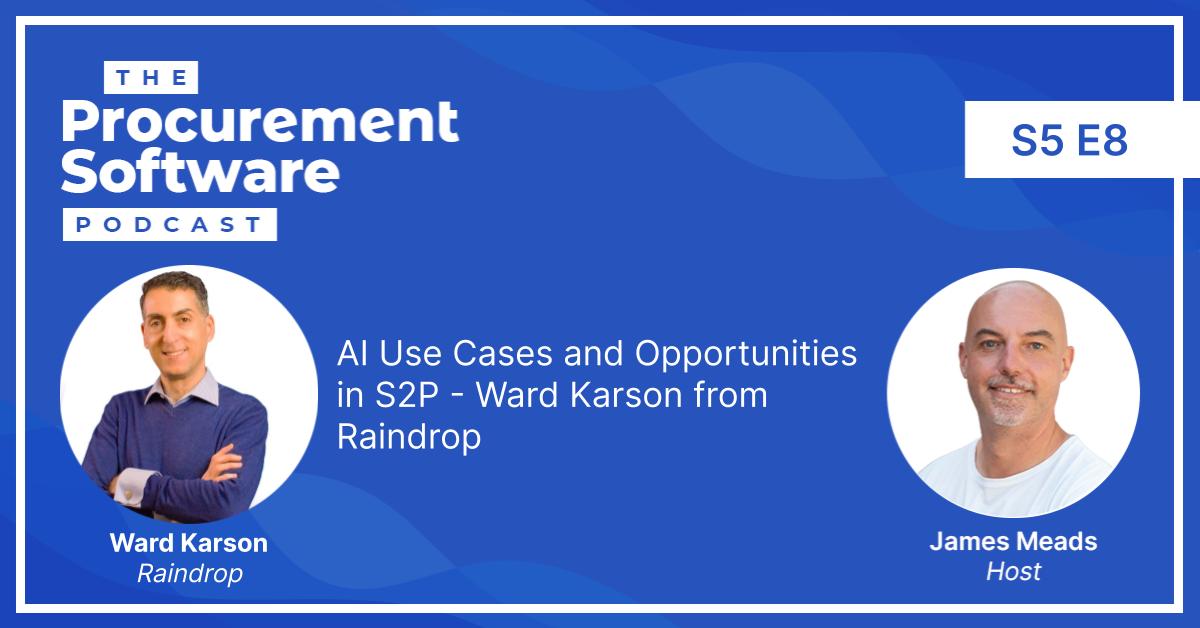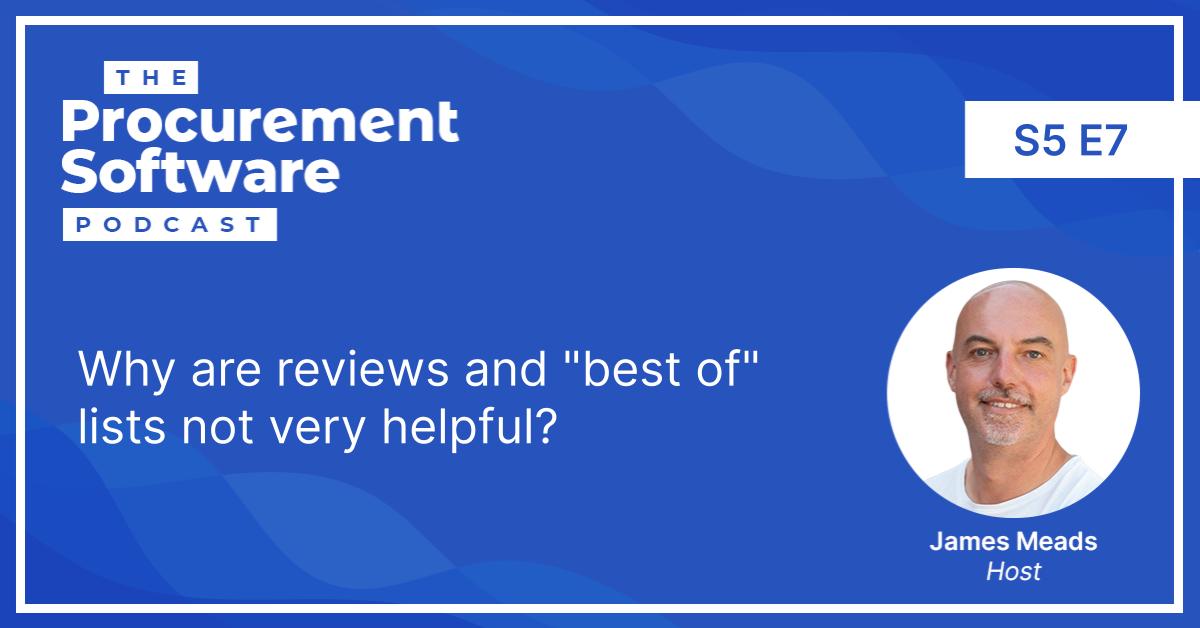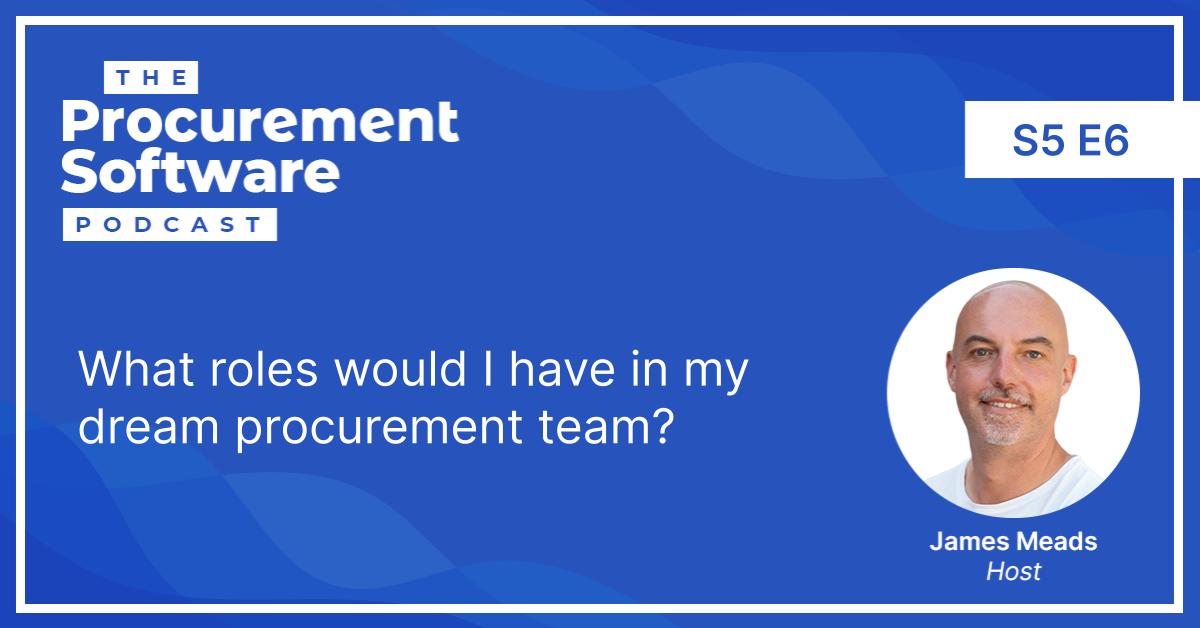Welcome back to The Procuretech Podcast!
We’re continuing with our mini series where we ask influencers and industry experts for their thoughts and nuggets of advice on everything that’s happening in the digital procurement world.
This episode we’re talking about agility, and we’re joined by an expert on all things agile procurement: President of the Lean Agile Procurement Association, Mirko Kleiner.
Agile Procurement: Fantasy or Attainable? – Mirko Kleiner from LAP Alliance
I first heard of Mirko back in 2016, when I saw him asking on his website why procurement can’t be more fun, lean and agile. I’m a huge fan of this kind of thinking.
Our talk today should prove that agility isn’t just something for startups in the tech industry.
But before we get into that, let’s have a quick recap on Mirko’s journey so far.
Mirko Kleiner – A brief background
Mirko’s actually not a procurement professional. His roots are in the supplier side, which led to some big tenders from a software supplier back in the early 2000s.
He noticed a problem. Customers didn’t know what they really wanted, and expected a fixed price fixed scope contract. So back in summer 2018, Mirko got inspired by the fact that there was no solution for handling this kind of uncertainty.
And so he decided to reinvent the wheel and start on page one. If procurement didn’t exist Right? How would we design that from scratch? That was the starting hypothesis.
Because of his software background, he was used to having just one day to close the deal, sign the contract and start collaboration and delivery the next day. That was his starting point.
And out of this crazy idea, a whole new movement and a whole new approach evolved.
The evolution of Agile Procurement
The first step was bringing together the right people.
Then they asked, what are the expected outcomes? A lot of customers seemed to struggle internally over expectations at the very high level.
Something magic happened when they realised they needed to bring in suppliers.
Instead of sending around documents as we used to do in the past, the idea was to invite suppliers into the discussion at the ground floor. To have them simultaneously in the same room – physically, or virtually – to co create the solution.
This can close the deal within hours, or days, depending on the complexity of the case.
And this doesn’t just apply to software procurement. It extends to buying raw materials or professional services. The approach could apply to any category, direct and indirect.
It’s not a silver bullet – if you have a commodity, something that you could buy off the shelf, or a finished product, then you’re better using a reverse auction or an RFP.
But if you have a level of uncertainty, innovation, or it’s very organisational complexity, sometimes it’s even a complexity, an organisational complexity, you should choose a more agile approach.
Agile is is a great way to be able to work with suppliers and understand what they bring to the table in terms of innovation on top of just commercial factors.
The role of technology in Agile Procurement
It might seem like agility isn’t impacted much by technology. After all, so much of what Mirko does is about bringing people together.
But technology actually facilitates that process. You can’t always meet in person. And bringing together 70 people from different suppliers virtually would not have been possible several years back.
From a procurement perspective, Mirko collaborates a lot with the World Commercial Contracting Association. They have tons of great numbers and studies that point to the importance of transparent supplier data. So that’s definitely key.
Commodity sourcing is going more in the direction of a self-serving model. This combines with the general benefits of automating tedious processes: The opportunity to speed up how we work and free up time for more tactical concerns.
If we can get clean data and single sources of truth for things like vendor master data and contracts, that definitely supports agility.
It might not be the central piece of the puzzle, but technology is definitely an enabler in that regard.
Implementing agility – the next stage
If companies have done their homework with technology, by putting things in place like a single source of truth, that’s just the beginning of the journey for Agile.
Roche is a good example. Part of their organisation stepped out of being just a service or a support to the business, into being a more proactive enabler of the organisation.
They started to proactively work together with the business, to educate them, so that they could source themselves or become a real problem solver and a transformational coach to the organisation.
Another example – a lot of companies are still at the stage where they need to optimise and create a single source of truth. Agile recently sourced an ERP system in just four weeks.
When it comes to enabling businesses through technology, Agile can be a great catalyst for change.
Certification from industry associations
Mirko sounds like a classic example of someone from a non-procurement background coming in and spotting inefficiencies. Some industry bodies might seem a little bit stale.
Given his radical approach, have any of the industry’s major associations or certification bodies been in touch?
Mirko says they have. Agile is currently working closely with World Commerce and Contracting, for example. They’ve also come up with their own certification and training.
This is incredibly important. Because when you negotiate these kinds of changes, you’re not just looking for a customer supplier relationship, you’re looking for strategic partners.
You shouldn’t treat a partner with this good cop / bad cop negotiation style. So that also needs to change.
In a big sense, the whole part of management needs to change and become much more agile as well. So the Agile values become crucial here, it’s all founded on that.
Agile is also working together with CIPS (the Chartered Institute of Procurement & Supply).
But Mirko admits that for some of these organisations, the response has been: “What the heck?”
Agile can be seen as a competitor by these old monoliths, but in truth it’s complimentary. It could could become an integral integral part of their curriculum for their members.
It’s going to take time and working closely together with those associations to get the message across.
A new Agile ecosystem
Agility is bigger than procurement – it applies to finance, it applies to marketing, it applies across the board. And these conversations are becoming more and more common.
Mirko has the feeling that all these movements are about to come together. He’s currently in progress with some other thought leaders to build up a kind of ecosystem: New topics, new training materials, and sharing data to potentially have a huge, huge impact.
As an example, last year Agile began working with the public sector. Did you know that public sector procurement is responsible for 10-15% of GDP?
That’s huge. And Agile could do some really important work in that space. Not just commercially, but in terms of all the other topics that procurement now takes care of like sustainability.
Procurement historically, both in the private and public sectors, has tended to think in categories. Whereas the classic example across the rest of the world and business at large just just doesn’t.
It’s a perfect fit for Agile to bring some much-needed change.
However, the Agile world needs to understand procurement better too. It takes two to tango, as they say. And that’s an ongoing and evolving process.
Wrapping Up
Thanks so much to Mirko Kleiner from LAP Alliance for joining us today.
If you’d like to get in touch, or learn more about Mirko’s work, check out Agile’s website.
You’ll find all their case studies, approaches and papers there.
Agile also has a global study on the current state of agility in procurement supply, that you can download for free.
And if you want to learn even more, Agile has public classes on all those topics that you could sign up to.
Links to all of these can be found below.
Thanks for listening, and we’ll see you next time!
Stay in touch
- Check out Lean Agile Procurement‘s website
- Connect with Mirko on Linkedin
- Sign up for the Procurement Software Newsletter
- Book an Intro Call and let’s talk all things Digital Procurement!
- Connect with James on LinkedIn
- Follow Procurement Software’s LinkedIn Page


